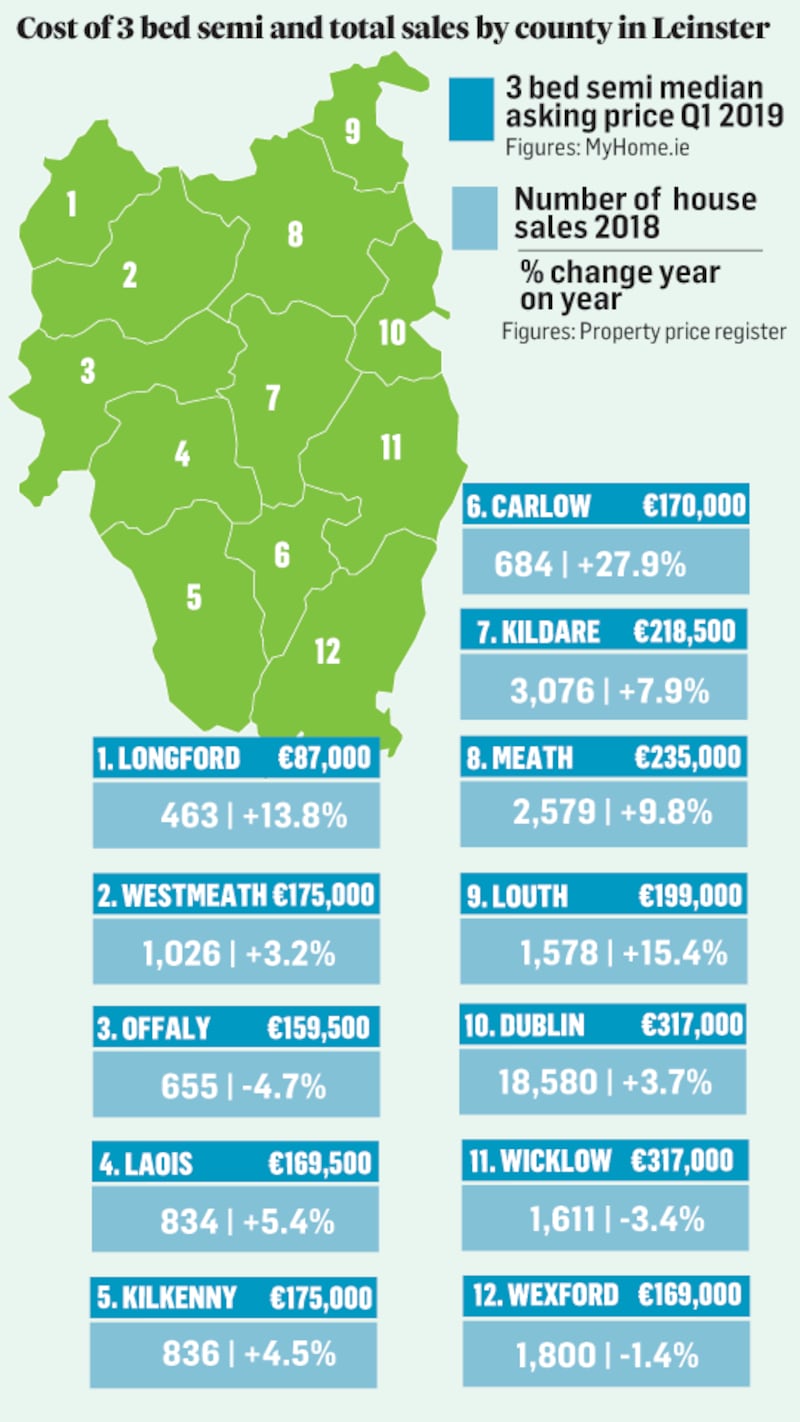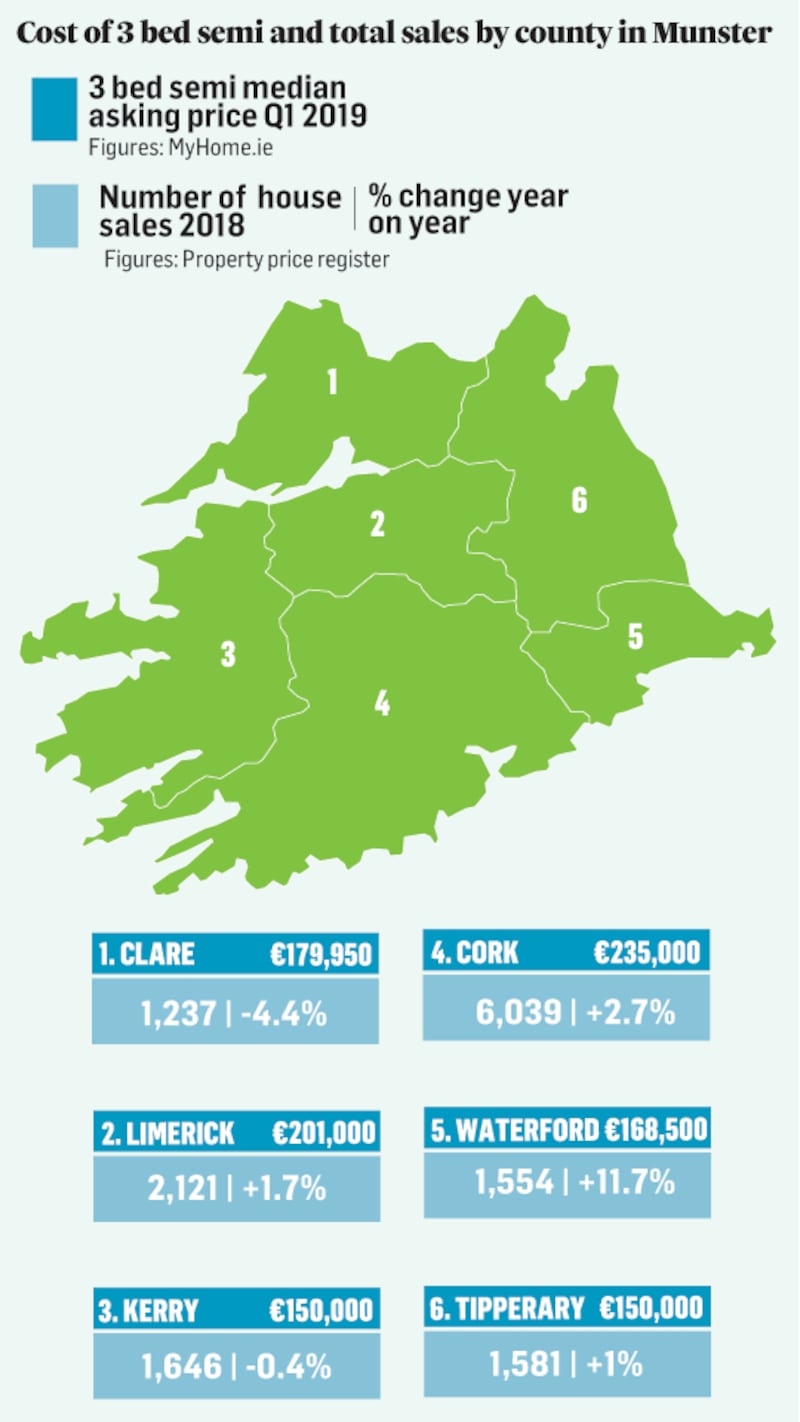Dublin and Leinster dominate the residential property market in Ireland with the volume of property transactions in Leinster now accounting for almost 60 per cent of all house sales in the State, and Dublin responsible for more than half of these sales.
The research, compiled by MyHome.ie, also shows that Leinster accounts for a disproportionate amount of the value of all residential property sales in the State. Where the total value of house transactions (based on Property Price Register figures) in Leinster increased last year by 14.5 per cent to €12.2 billion, it is striking to note that this sum accounted for 73 per cent – nearly €3 out of every €4 – of the estimated €16.8 billion spent on all residential property in Ireland last year. Dublin sales at 18,850 accounted for just under a third of all sales nationally with the value of those sales contributing more than half (52 per cent) to the total.
In 2018 the number of house sales in Leinster grew by almost 5 per cent to 33,722 sales across the provence, while nationally transactions lagged this slightly with 3.8 per cent growth to 56,836 sales. The Leinster county with the highest number of sales after Dublin was Kildare, where the number of sales rose 7.9 per cent in the year, making it the third biggest county for sales. As a consequence it was also the county with the third highest property spend at €877 million. Similarly, Meath continues to benefit from its proximity to the capital with the number of sales there growing almost 10 per cent to 2,579.



The figures reflect the ongoing demand for and pressure on housing around the capital according to MyHome managing director Angela Keegan. "Internationally we are seeing a move towards increased urbanisation and in Ireland Dublin is very much the focus point for that. This is reflected in the increase in the volume of sales in commuter belt counties around Dublin and indeed in most other Leinster counties – they only fell in three – as well as increases in the commuter belts of other cities.
Property in Munster comprised 25 per cent of the total transactions, with Cork accounting for the lion’s share of these sales at 6,039 properties, accounting for 10.6 per cent of all sales nationally. The value of Cork sales rose sharply by 20 per cent from €1.36 billion to €1.63 billion even though the number of transactions only increased by 2.7 per cent.
Co Galway ranked fourth for the number of transactions last year with 2,636 sales, but this marked a 5.2 per cent drop on the previous year and may point to a lag between stock available to buy and demand. “For a market like Ireland’s with some two million homes, we should be seeing at least 4 per cent of those properties changing hands annually. We are currently under 60,000 sales nationally and we need to get to around 80,000 sales a year, but the graph is moving in the right direction,” said Keegan.
Overall the number of sales were up in 16 counties and down in 10, however the value of those sales was only down in three counties – Monaghan, Wicklow and Clare. Carlow showed a 28 per cent increase in sales but also the biggest increase in the value of those sales at 47 per cent possibly reflecting increased urban sprawl from Dublin to the north of the county. Longford recorded the lowest number of sales with 463.
The median asking price for a three-bed semi in each county provides an at-a-glance picture of the disparity from one county to the next in the price of Ireland’s most popular house type. It reflects Ireland’s continued focus on Dublin as the number one area to live, and the premium people are willing to pay to be in or within commuting distance of the capital. As prices continue to increase along with infrastructure pressures, Keegan says there is an apparent need for a more balanced approach to regional development for Government and planning authorities.














